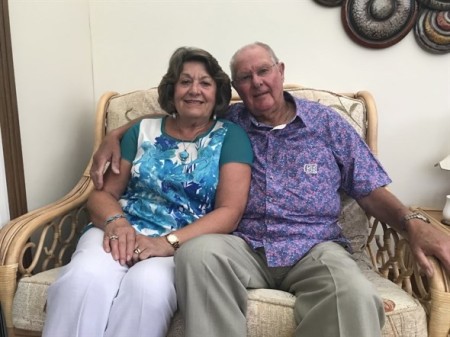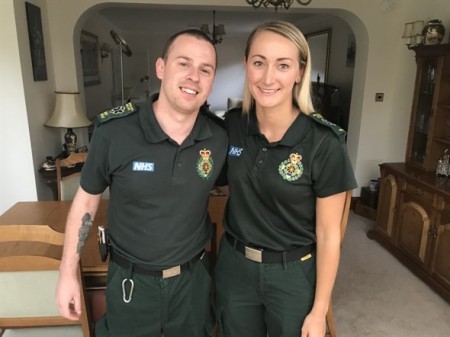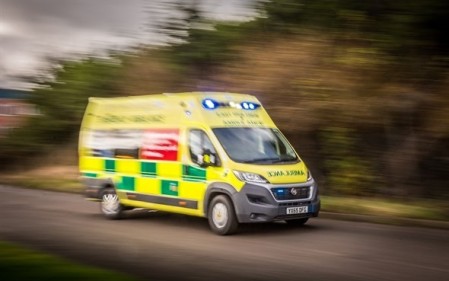A grandmother who suffered a brain haemorrhage while on a caravanning holiday with her husband was reunited with the ambulance crew that saved her life.
Julie Howiss, 72, from Sutton-In-Ashfield, experienced an "explosive headache" and blindness when she got out of bed on the morning of October 10, last tear, while on vacation in Grantham.
Moments later, Julie also began vomiting and soon lost consciousness. Unknown to her, this had been caused by a brain aneurysm which had haemorrhaged. An aneurysm is a bulge in a blood vessel caused by a weakness in the blood vessel wall.
Julie's husband of 50 years, John Howiss, witnessed his wife collapse to the floor, and she said to him: "John, you're going to have to get me some help. I'm really ill."

Speaking of that day Julie said: "Leading up to my incident I had not experienced any symptoms that would have suggested I had a bleed on the brain.
"I felt my vision was going and that I had a pain in my head. I then called out to my husband to get help as I knew I need it urgently."
John added: "I then immediately rang 999 and that is when Callum and Claire arrived in the ambulance. They were both wonderful with Julie.
"Callum came over to speak with me privately to share his concerns that he believed that Julie was having a bleed on the brain."

Julie was rushed to Grantham District Hospital under blue light conditions in order to have a CT scan on her brain. This confirmed what Callum and Claire had feared.
Emergency Care Assistant, Callum Lamb said: "Julie was presenting all the symptoms which were indicative of someone experiencing a neurological episode and it was imperative we got her to hospital as soon as possible."
Once Julie's CT scan was completed at Grantham, Callum and Claire transported her over to Queen's Medical Centre (QMC) in Nottingham.
At QMC Julie underwent a procedure called endovascular coiling, where a thin tube is inserted into an artery in the leg or groin. The tube is then guided through the network of blood vessels, up into Julie's head and finally into the aneurysm.
Tiny platinum coils are then passed through the tube into the aneurysm to seal it off from the main artery, which prevents it growing or re-rupturing.

Julie was rushed to Grantham District Hospital for a CT scan and then taken to Queens Medical Centre for treatment under blue lights.
Around 60% of patients who present with a bleed on the brain as a result of a brain aneurysm sadly die within two weeks of the episode occurring.
Paramedic Claire Snowden said: "If anyone shows the symptoms of a bleed on the brain then it is crucial they ring 999.
"If Julie had of been on her own and couldn't have rang an ambulance herself then the bleed on her brain would have increased. This could have been life-threatening."
John said: "Julie was in hospital for a month while she recovered and when she was finally allowed to come back home to me she recovered very quickly.
"Thankfully she has now fully recovered and we are now both enjoying life to the full."